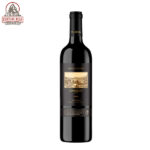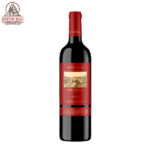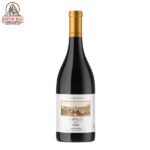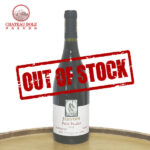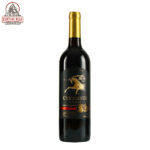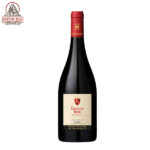South Australia
South Australia is one of the Australia’s six states, located (as the name implies) in the south of the vast island continent. It is the engine room of the Australian wine industry, responsible for around half of the country’s total output each year. But the region isn’t just about quantity – countless high-quality wines are made here, most of them from the region’s signature grape variety, Shiraz. These include such collectable fine wines as Penfolds Grange, Henschke Hill of Grace, Torbreck The Laird and d’Arenberg The Dead Arm.
South Australia’s wine portfolio is heavily focused on powerful red wines, most of which are made from Shiraz. Another variety which thrives here is Cabernet Sauvignon, the best examples of which come from the Limestone Coast in the state’s far south-eastern corner (particularly in Coonawarra, Padthaway and Robe). Grenache has also proved well-suited to the South Australian climate and wine-making style, particularly when combined with Shiraz and Mourvèdre (also called Mataro in Australia) to create the classic Australian GSM blend. Such diverse European varieties as Tempranillo, Nebbiolo, Montepulciano and Petit Verdot are also to be found in South Australian vineyards, but only in small quantities.
White wine plays something of a supporting role in South Australia. A notable exception is a world-class Riesling that has emerged from the Clare Valley in the past few decades. Almost inevitably, Chardonnay is grown widely here, and higher-quality wines are being made in cooler areas such as the Adelaide Hills. and the best sites in the Limestone Coast region. Among the less common white-wine varieties are Semillon, Roussanne, Viognier and Verdelho.
From east to west, South Australia measures roughly 1200 kilometres (750 miles), and borders every other Australian state except the island of Tasmania. Its measurements from north to south are less neat and man-made, as its southern border is formed entirely by the arching coastline of the Great Australian Bight. It is at the eastern edge of this arch, as the coastline plunges southwards into cooler latitudes, that the vast majority of South Australian wine is produced.
The south-eastern corner of South Australia is significantly cooler and less arid than further north, which is simply too hot and dry for vitis vinifera vines to perform. The climate is moderated by two large gulfs, which bring the cool waters of the Southern Ocean hundreds of miles inland from the main coastline. Between the eastern side of the Gulf of St. Vincent (the smaller of these two) and the Murray River is a belt of green about 80km (50 miles) wide, clearly visible on satellite images. Here, the famous Barossa Valley, Eden Valley, Clare Valley and McLaren Vale vineyards are to be found. For in-depth descriptions of all the South Australian wine regions, see the menu to the left.
Given the size of South Australia, climate and topography vary significantly across the state. Even within the main winegrowing regions in its south-east corner, the distances are significant; Coonawarra lies a full 450km (275 miles) south-east of the Clare Valley, and 550km (350 miles) from the state’s northernmost wine region, the Southern Flinders Ranges. This covers an area larger than all of Portugal.
The winegrowing regions cover six full degrees of latitude (38°S to 32°S). Altitude is also diverse here, ranging from almost sea-level in Langhorne Creek to 600m in parts of the Piccadilly Valley in the Adelaide Hills. This makes it impossible to summarize South Australia’s terroir to any useful degree of accuracy, while also explaining how the wineries of a single region can produce such diverse wines from crisp, cool-climate Chardonnay to rich, robust Shiraz.
Showing all 5 results

